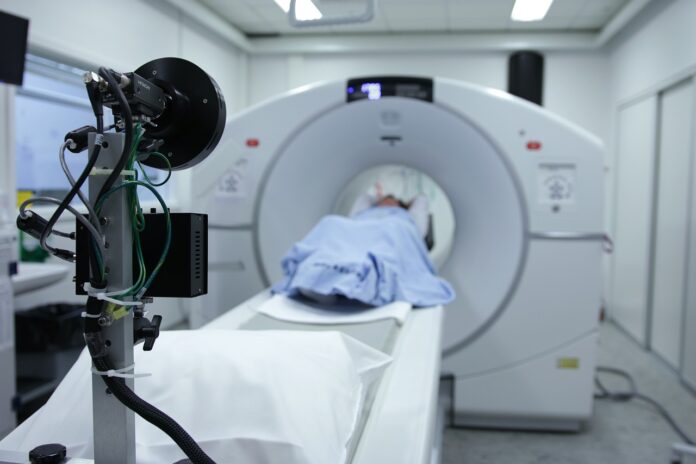As a healthcare professional, you understand that efficient management of patient data is crucial. Radiology Information Systems (RIS) are revolutionizing the way imaging departments operate, enabling you to deliver faster, more accurate patient care while streamlining your workflow. Discover how embracing RIS can transform your practice, minimize errors, and enhance overall patient satisfaction.
Efficient Scheduling
Radiology Information Systems (RIS) immensely optimize scheduling efficiencies by providing a centralized platform for managing appointments. The professional team from AbbaDox can explain how this integration allows for real-time visibility of patient appointments, machine availability, and even preparation steps for specific procedures. The system can automatically adjust schedules based on procedure duration, emergency cases, and cancellations, ensuring optimal use of radiology department resources.
Image source:
Moreover, RIS can help reduce patient wait times through automated reminders and confirmations, thus, decreasing no-show rates. This level of coordination leads to more predictable workflow patterns, enabling radiologists to focus more on patient care rather than administrative tasks. By smoothing out the scheduling process, RISs not only improve operational efficiency but ultimately contribute to a better patient experience.
Enhanced Communication
Enhanced communication facilitated by Radiology Information Systems (RIS) marks a significant leap in medical imaging efficiency and patient care. These systems support seamless interaction between radiologists, technicians, and other healthcare professionals. By allowing for easy sharing of imaging results and reports, RIS ensures that all members of a patient’s care team are on the same page, reducing the likelihood of miscommunication and errors. Critical findings can be flagged immediately, speeding up the diagnostic process and enabling quicker response times to patient needs.
Additionally, RIS can integrate with other platforms such as Electronic Medical Records (EMR), further centralizing patient information. Access to a comprehensive patient history aids healthcare providers in making informed decisions and fostering collaborative treatment planning. Also, RIS often features secure messaging portals, which facilitate direct and HIPAA-compliant communications among medical staff. This integrated approach not only improves the quality of patient care but also contributes to more efficient and coordinated healthcare delivery.
Accurate Data Management
Radiology specialists need to work with a lot of different data so they can help their patients. These are usually the following pieces:
- Patient demographics
- Clinical history
- Imaging studies
- Radiology reports
- Prior imaging studies
- Lab results
- Clinical guidelines and protocols
- Medical literature and research
- Communication with healthcare teams
Radiology Information Systems (RIS) elevate data management accuracy by digitizing and centralizing all radiology-related patient data. This digital transformation reduces the risk of manual entry errors and data redundancy.
With RIS, radiologists can quickly reference a patient’s complete imaging history and pertinent medical records, ensuring that diagnoses and treatment plans are based on the most accurate and up-to-date information available, thus facilitating superior patient care outcomes.
Workflow Optimization
Workflow optimization through Radiology Information Systems (RIS) is achieved by automating routine tasks, minimizing manual input, and facilitating the quick transfer of imaging data. RIS streamlines numerous administrative operations such as patient registration, exam ordering, and billing. Furthermore, radiologists benefit from tools like voice recognition for report dictation, leading to quicker turnaround times.
These systems efficiently sort and prioritize worklists, allowing radiologists to address the most critical cases first. Integrated analytics help in monitoring department performance and identifying bottlenecks. By reducing administrative burdens and enhancing the efficiency of diagnostic processes, RIS significantly improves the productivity of radiology departments, ultimately leading to increased patient throughput and improved health outcomes.
Integrated Imaging
Integrated imaging in Radiology Information Systems (RIS) allows for consolidation and straightforward access to various imaging modalities such as X-rays, CT scans, MRI, and ultrasound. This central repository enhances the diagnostic process by enabling radiologists to easily compare current and past images, leading to more accurate assessments.
RIS integration supports advanced imaging functions like 3D reconstruction, which aids in complex case reviews. Additionally, the interoperability with Picture Archiving and Communication Systems (PACS) ensures that images are readily accessible across different departments, improving the speed and efficiency of patient care delivery.
Quality Assurance and Reporting
Quality assurance and reporting in radiology are crucial for maintaining high standards of patient care. Setting up this system significantly enhances this aspect by offering structured reporting templates to ensure complete and consistent documentation of findings. These templates help radiologists by suggesting standardized terminology, reducing variability in interpretation that can lead to misunderstandings in patient care.
Further, RIS facilitates the tracking of quality metrics, enabling departments to identify trends, assess performance, and implement changes where necessary. With automated alerts for overdue reports and real-time updates on report statuses, RIS maintains the accountability of the diagnostic process. By enabling detailed analytics, RIS aids in compiling comprehensive quality assurance reports, fostering continuous improvement and compliance with regulatory standards.
As you consider the benefits of Radiology Information Systems, remember that an RIS is more than an upgrade—it’s a transformative tool for enhancing patient care and elevating the efficiency of your healthcare practice. Embrace the change, streamline your processes, and join the forefront of medical innovation. Your patients—and your team — will thank you.


